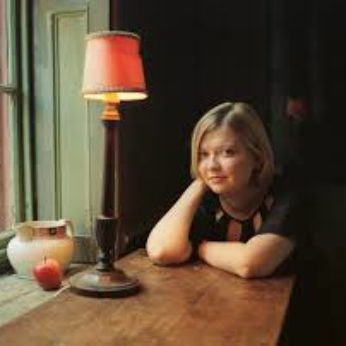Composer: Franz Schubert (b. 1797 - d. 1828)
Performance date: 29/06/2015
Venue: St. Brendan’s Church
Composition Year: 1819
Duration: 00:41:11
Recording Engineer: Richard McCullough, RTÉ lyric fm
Instrumentation: 2vn, va, vc, pf
Instrumentation Category:Piano Quartet/Piano Quintet
Artists:
Niek de Groot -
[double bass]
Natalie Clein -
[cello]
Lilli Maijala -
[viola]
Alina Ibragimova -
[violin]
Till Fellner -
[piano]

In the summer of 1819, when Schubert was struggling
for recognition as an opera composer, he went on a summer holiday with the
baritone Johann Vogl to the latter’s home town of
in the mountains of
celebrated the beauty of the mountains and lakes in his songs, was able for the
first time to experience them himself.
What’s more thanks to the advocacy of Vogl Schubert found himself at the
centre of a circle of admirers and a piano was moved into his room so that he
could compose.
A local amateur
cellist and assistant manager of Steyr iron mines, Sylvester Paumgartner,
hosted many of the musical evenings and he commissioned the Piano Quintet,
which was to include a set of variations on the theme of Die Forelle and to be scored for the same instrumental combination
as the then popular quintet by Hummel. The five movements alternate quick and
slow and their relaxed tempi are closer in spirit to the eighteenth-century
divertimento than the big Romantic quintets of Schumann and Brahms. The most novel aspect in the Trout is its
ability to wind down the music to the state of a slow contemplative dance,
which is what gives the work its magical atmosphere.
The opening Allegro
is in sonata form complete with exposition repeat, though the clear distinction
between first and second subject is blurred, ideas merging into one another
with great spontaneity. The development
begins dramatically pianissimo with strings alone before building to an
animated climax. The recapitulation is a
transposed repetition of the exposition with two sections omitted, one of
several signs of hasty composition – Schubert was clearly working to a
deadline.
The Andante theme is
given first in the piano and then the violin.
Triplet movement ushers in a new idea and the melody is given to the
viola and cello in the key of F sharp minor.
A dotted rhythm then appears to dispel any minor key sadness and the
first theme is brought gently back, but instead of stopping the minor key
section returns and there is a full repeat. The sparkling scherzo has a catchy
tune, heavily reinforced in the bass department, while the trio is more
delicately scored with the piano part entirely in the treble clef.
The variations on Die Forelle begin with the theme stated
in the strings alone, the first variation is given to the piano and the second
to the viola below a decorative violin. In the third the cello and the bass
play the theme piano almost drowned
by the piano’s whirling arpeggios as the angler muddies the waters of
freedom. The fourth variation steps up
the tempo and the volume as the unfortunate fish fights for his life. The fifth
variation gives much prominence to the cello of Herr Paumgartner as the
musicians collectively mourn the loss of freedom and life. The Finale revolves
around the opening figure heard first in the viola and violin and echoed at
once by the piano. The movement is
divided into two halves, where the second apart from changes of key is more or
less a repeat of the first.
Copyright © 2025 West Cork Music. All rights reserved.
Designed and developed by Matrix Internet